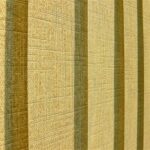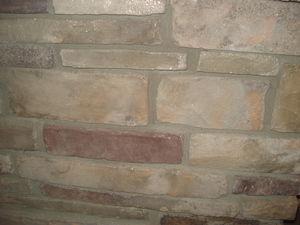Decorative wall panels, although much more popular several years ago, are still a viable, attractive and cost efficient way to finish off an interior wall.
Paneling comes in many different finishes such as faux brick and stone, knock-down drywall, wallpaper panels and the traditional wood paneling. Tile board remains a very economical way to line a shower without sacrificing style.
Installing wall paneling is not very difficult and definitely within the abilities of the average do-it-yourselfer. There are some guidelines that should be followed to ensure a trouble-free installation and prevent problems in the future. The installation procedures that follow are suggested by Georgia Pacific, a leading manufacturer of decorative wall paneling.
Before getting into the installation itself, it is important to note that paneling is intended to be used in a normal, dry, interior environment. It should never be applied to an exterior wall, exposed to the elements or used in a damp basement.
First, the panels need to be conditioned to the environment in which the will be installed. Store the panels in the room to be paneled for 48 hours, making sure they are laid flat with spacers. Leaning them against a wall is acceptable, but a space should be left between them in order for air circulation to properly acclimate them.
The next step is to prepare the wall for installation. A true, flat wall is ideal for paneling and installing paneling over a wavy or rough surface is a complete waste of time. Removing existing wall finish or sanding high spots may be necessary. Stud spacing must be determined as the panels are nailed into them for maximum holding. Snap vertical lines down the center of each stud along the wall. In most cases, especially in newer homes, this spacing will be 16″. If spacing is over 16″, horizontal furring should be applied every 16″. Panels at least ¼” thick may be installed directly over studs or furring. Panels under ¼” thick need a non-combustible backer behind them. Any exterior wall needs to be insulated and a vapor barrier installed on the interior side prior to installation. Tile board should always be installed over a backer.
Now it’s time to arrange the panels for the most aesthetic result. If wood paneling is used, place the panels around the room, arranging them for the most balanced and color coordinated effect. Number the backs for easy reference.
The panels should be at least ½” shorter than the floor to ceiling measurement to allow a ¼” expansion top and bottom. Transfer this measurement to the panels for cutting. If using a handsaw or table saw, cut the panel face up. If using a saber saw or circular saw, cut it face down. Cutting out for outlets, window sections, etc. requires very careful measurements. One easy way to accomplish this is to mark the outlet with chalk and press the panel in place, transferring an image to the back of the panel. Cut the opening a little larger for adjustment.
Finally, it’s time to actually hang the paneling. Never butt the panels together as this may cause buckling during the expansion and contraction cycles. Leave a 1/16″ gap between the panels. The first panel must be hung plumb and both edges must fall on a stud center. Trim the panel if necessary. This first panel sets the stage for the remaining panels. Nail the panels every 6″ along the edges and every 8″ on intermediate studs. Construction adhesive may also be used in lieu of nails or in addition to them.
That’s all there is to it. Following these simple steps should ensure a trouble-free, professional paneling project.
Ref: Georgia Pacific paneling installation guide





